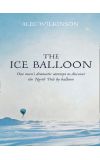
02 Apr 2013 12:43:56
One corpse was wearing a jacket with a monogram that revealed its owner's identity: SA Andrée, the Swedish explorer who, with two companions, had set off 33 years earlier, on 11 July 1897, in a hydrogen balloon to discover the north pole. The men's diaries showed they had fallen well short of their goal and had perished in October that year, trying to make their way back to civilisation.
The bodies of Andrée and his companions, Knut Fraenkel and Nils Strindberg, were eventually brought back to Sweden where they were accorded a lavish state funeral. Their remains were cremated without proper medical examination, however, and the omission has since fuelled wild speculation about the causes of their deaths. They were well-armed and supplied when they perished. So what killed them?
Suggestions have included suicide (they had a good supply of opium), polar bear attacks, scurvy, botulism and lead poisoning from contaminated tinned food. To his credit, Wilkinson downplays such speculation. As he notes, the three men had dragged extremely heavy sleds over treacherous ice floes for three months when they reached Kvitøya. "The sailors from the Bratvaag … decided that they had died of cold and exhaustion," he says.
The fact that Wilkinson backs the idea that the three men met relatively prosaic deaths might seem undramatic. The Ice Balloon is a lively read, nevertheless, and is at pains to paint Andrée in a reasonable light, previous biographers having suggested his expedition was foolhardy and badly planned. In truth, it was no different to so many other fatal polar expeditions of the day.

